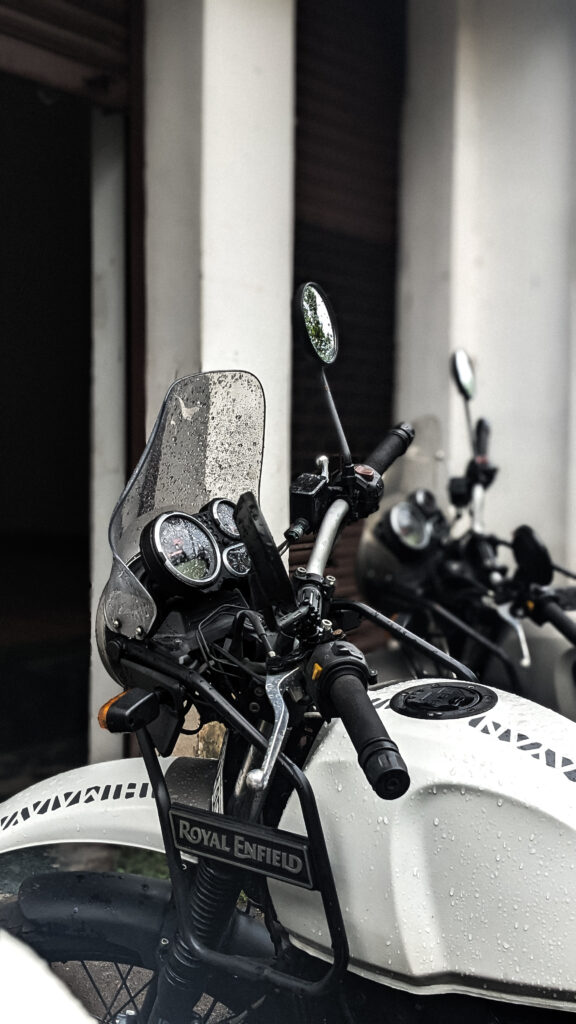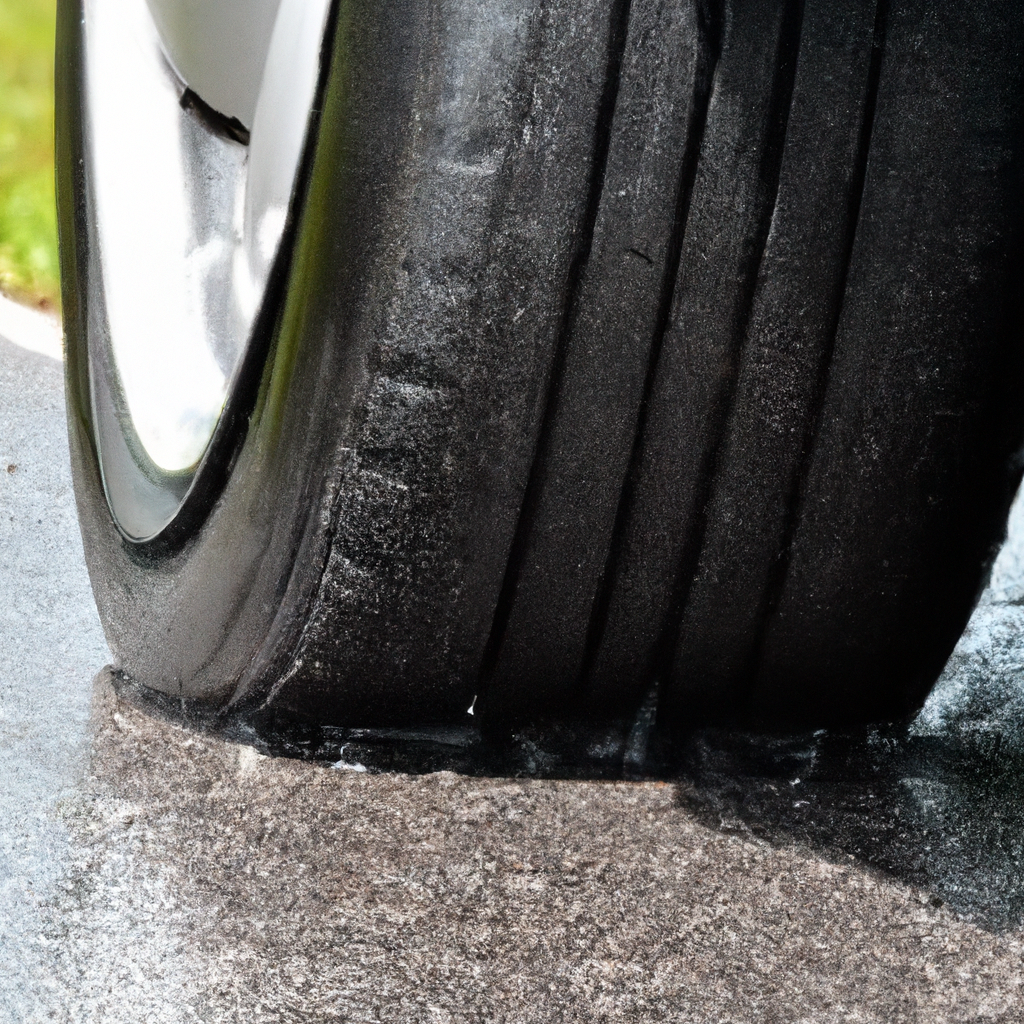Imagine driving in wet and rainy conditions, your car gliding effortlessly on the slick roads. But what if you had run-flat tires? Have you ever wondered how these unique tires perform in such challenging weather? With their reinforced sidewalls and innovative design, run-flat tires offer a promising solution for drivers who prioritize safety and peace of mind. In this article, we will explore the fascinating world of run-flat tires and uncover just how well they handle in wet and rainy conditions.
The Importance of Tires in Wet and Rainy Conditions
When it comes to driving in wet and rainy conditions, one of the most crucial factors to consider is the performance of your tires. The condition of your tires greatly affects your ability to maintain control and grip on wet roads, which is essential for your safety. In this article, we will explore the importance of tires in wet and rainy conditions, particularly focusing on the performance of run-flat tires.
Tire Performance in Wet Conditions
Wet conditions can significantly impact the performance of your tires. When roads are wet, the risk of hydroplaning increases, making it crucial to have tires that can effectively channel water away from the surface and maintain traction. Tires with a well-designed tread pattern and good water evacuation capability are essential for maintaining stability and control on wet roads.

Tire Performance in Rainy Conditions
Rainy conditions pose a unique set of challenges for drivers. The combination of water on the road and reduced visibility requires tires that can provide optimal grip and handling. Tires with a good wet grip are essential to ensure safe braking and cornering in rainy conditions. Additionally, the ability to resist aquaplaning, where a layer of water forms between the tires and the road surface, is critical for maintaining control.
What Are Run-Flat Tires?
Now that we understand the importance of tire performance in wet and rainy conditions, let’s delve into the specifics of run-flat tires. Run-flat tires are a type of tire that is designed to allow you to continue driving even after a puncture or loss of pressure. They are equipped with reinforced sidewalls that provide structural support, allowing the tire to remain intact even when there is a loss of air pressure.
Definition and Features of Run-Flat Tires
Run-flat tires are designed to support the weight of the vehicle even when they are completely deflated. This allows you to continue driving for a limited distance at a reduced speed, usually up to 50 miles, giving you the opportunity to reach a safe location for repair or replacement. The reinforced sidewalls of run-flat tires provide the necessary support and prevent the tire from collapsing under the vehicle’s weight.
Benefits of Run-Flat Tires
The main advantage of run-flat tires is their ability to provide extended mobility even after a puncture or loss of pressure. This eliminates the need for immediate tire changes on the side of the road, minimizing the risk and inconvenience associated with a tire failure. Run-flat tires also offer improved safety as they allow you to maintain control of your vehicle even in the event of a tire failure. Additionally, run-flat tires eliminate the need for a spare tire, saving valuable space in your vehicle.

Run-Flat Tires vs. Conventional Tires in Wet and Rainy Conditions
Now that we have covered the basics of run-flat tires, let’s compare their performance to that of conventional tires in wet and rainy conditions.
Run-Flat Tires’ Performance in Wet Conditions
Run-flat tires are specifically designed to maintain performance even when deflated, and this holds true in wet conditions as well. With their reinforced sidewalls, run-flat tires can provide stability and control on wet roads, reducing the risk of hydroplaning. The ability to maintain a usable level of grip even after a loss of pressure makes run-flat tires a reliable choice for wet conditions.
Run-Flat Tires’ Performance in Rainy Conditions
In rainy conditions, run-flat tires offer similar advantages as in wet conditions. Their reinforced sidewalls provide the necessary support to prevent tire failure, maintaining control even in the event of a puncture. The advanced tread design of run-flat tires aids in water evacuation and enhances wet grip, ensuring safe braking and cornering in rainy conditions.
Comparison to Conventional Tires in Wet Conditions
In comparison to conventional tires, run-flat tires exhibit superior performance in wet conditions due to their ability to maintain stability and control even when deflated. Conventional tires, when punctured or deflated, can lead to a significant loss of control and increase the risk of accidents on wet roads.
Comparison to Conventional Tires in Rainy Conditions
When it comes to rainy conditions, run-flat tires once again outshine conventional tires. The reinforced structure of run-flat tires allows them to resist aquaplaning more effectively, providing better control and grip on wet surfaces. By contrast, conventional tires may be more prone to losing traction and compromising safety in rainy conditions.
How Run-Flat Tires Handle Wet and Rainy Conditions
Now that we have established the performance advantages of run-flat tires in wet and rainy conditions, let’s delve into the specific factors that contribute to their enhanced handling capabilities.
Tread Design and Water Evacuation
The tread design of run-flat tires plays a vital role in handling wet and rainy conditions. These tires are designed with grooves and channels that efficiently channel water away from the contact patch, allowing the tire to maintain optimal grip. By expelling water from the tire’s surface, run-flat tires reduce the risk of hydroplaning and enhance overall stability on wet roads.
Tire Compound and Wet Grip
The composition of the tire compound greatly impacts its performance on wet surfaces. Run-flat tires are engineered with compounds that prioritize wet grip, allowing for consistent traction and control even in rainy conditions. The unique chemical blend in run-flat tires optimizes the tire’s ability to grip the road surface, ensuring safe braking and cornering maneuvers.
Aquaplaning Resistance
Aquaplaning, also known as hydroplaning, occurs when a layer of water builds up between the tire and the road, leading to a loss of traction. Run-flat tires are designed to resist aquaplaning by incorporating specific tread patterns and high-performance compounds. These features allow the tires to effectively disperse water and maintain contact with the road surface, reducing the risk of losing control.
Cornering and Braking Performance in Wet and Rainy Conditions
Run-flat tires offer superior cornering and braking performance in wet and rainy conditions. The reinforced sidewalls of these tires provide added stability during cornering maneuvers, ensuring that the vehicle remains responsive and firmly planted on the road. Additionally, the advanced tread design and wet grip capabilities of run-flat tires enhance their braking performance, allowing for shorter stopping distances even on wet surfaces.

Factors Affecting Run-Flat Tires’ Performance in Wet and Rainy Conditions
While run-flat tires offer excellent performance in wet and rainy conditions, several factors can impact their overall effectiveness.
Tire Inflation Pressure
Maintaining the correct tire inflation pressure is crucial for optimal performance in wet and rainy conditions. Underinflated run-flat tires may result in reduced control and compromised grip, increasing the risk of accidents. Regularly checking and maintaining the recommended tire pressure is essential to ensure that run-flat tires perform at their best in wet conditions.
Tread Depth
The tread depth of run-flat tires directly affects their ability to disperse water and maintain grip on wet roads. As the tread depth wears down over time, the tire’s ability to channel water diminishes, increasing the risk of hydroplaning. Regularly inspecting the tread depth and replacing worn tires is essential for maintaining optimal performance in wet and rainy conditions.
Tire Age and Wear
The age of run-flat tires can also impact their effectiveness in wet and rainy conditions. Over time, the rubber compounds in tires can degrade, reducing their ability to provide optimal grip. Additionally, excessive wear can compromise tread patterns and increase the risk of aquaplaning. It is important to monitor tire age and wear, replacing them when necessary to ensure consistent performance in wet conditions.
Driving Habits and Speed
Your driving habits and speed play a significant role in the performance of run-flat tires in wet and rainy conditions. Aggressive driving, sudden acceleration, and high-speed maneuvers can increase the risk of losing control, regardless of the tire type. It is important to practice safe driving habits and adjust your speed to match the road conditions, maximizing the effectiveness of run-flat tires.
Maintenance Tips for Run-Flat Tires in Wet and Rainy Conditions
To ensure that your run-flat tires perform optimally in wet and rainy conditions, it is essential to follow proper maintenance practices.
Regular Tire Inspections
Regularly inspecting your run-flat tires for any signs of damage, wear, or punctures is crucial for maintaining their performance. Look for any visible cuts, bulges, or uneven wear patterns. If you notice any issues, it is advisable to seek professional assistance and repairs.
Proper Tire Inflation
Maintaining the recommended tire inflation pressure is vital for optimal performance in wet conditions. Use a reliable tire pressure gauge to regularly check the pressure and inflate or deflate the tires as necessary. Be sure to refer to the vehicle manufacturer’s guidelines for the correct tire pressure.
Rotating Tires
Regularly rotating your tires helps promote even wear and prolong their longevity. By rotating the tires, you can ensure that all four tires wear evenly, enhancing their performance in wet and rainy conditions. Consult your vehicle’s owner manual or consult a professional mechanic for the recommended tire rotation intervals.
Replacing Worn Tires
Worn run-flat tires can compromise your safety and performance in wet and rainy conditions. Monitor the tread depth regularly, and if it falls below the recommended levels, it is crucial to replace the tires promptly. By replacing worn tires on time, you can ensure optimal performance and maintain control on wet roads.

Conclusion
In conclusion, the performance of your tires in wet and rainy conditions is of utmost importance for your safety on the road. Run-flat tires offer several advantages over conventional tires in these conditions, providing extended mobility, improved control, and enhanced grip. By considering factors such as tread design, tire compound, and maintenance practices, you can ensure that your run-flat tires handle wet and rainy conditions effectively. Proper tire inflation, regular inspections, and timely replacements are key to maximizing the benefits of run-flat tires and ensuring a safe and comfortable driving experience in wet and rainy conditions.

